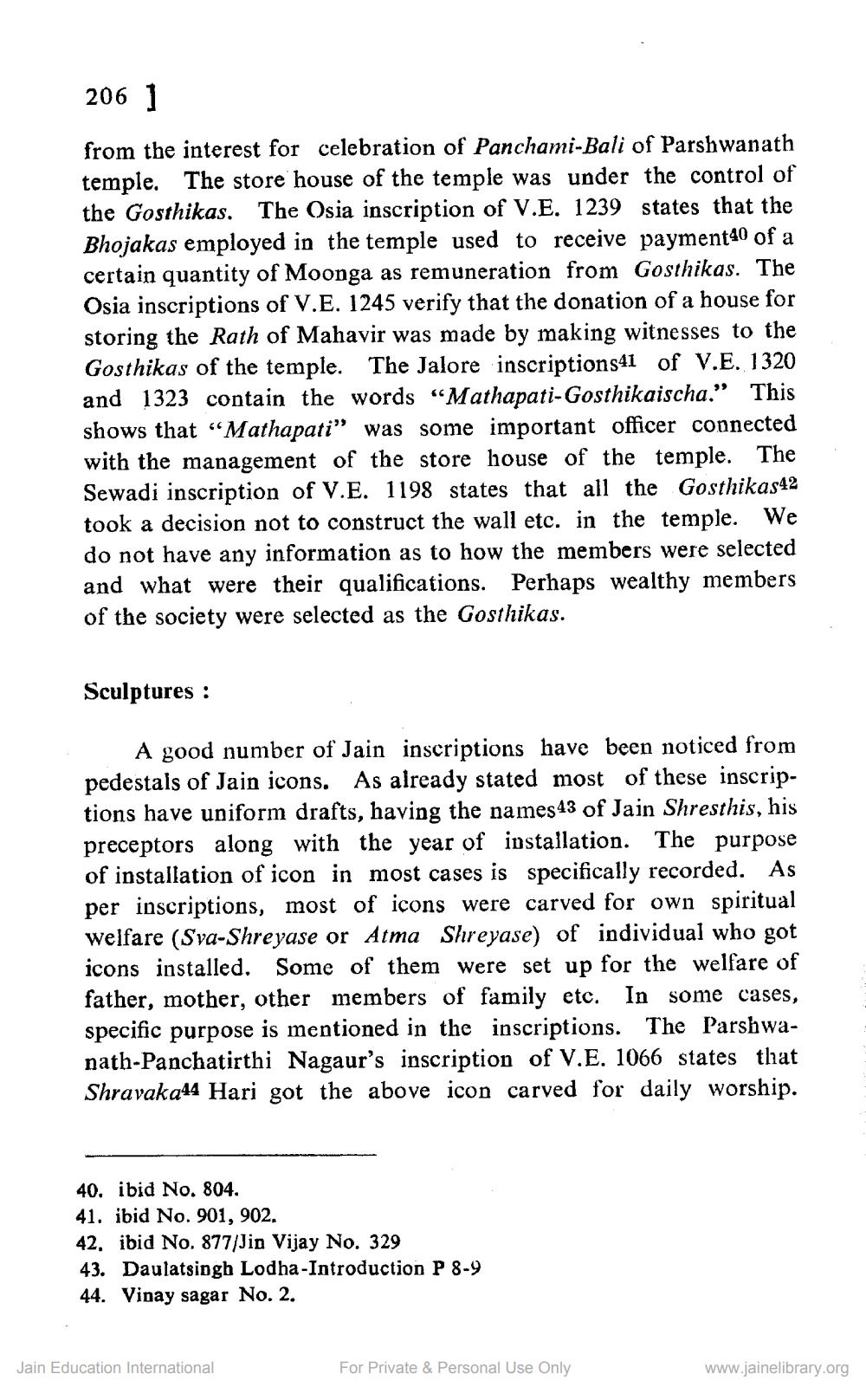________________
206 1
from the interest for celebration of Panchami-Bali of Parshwanath temple. The store house of the temple was under the control of the Gosthikas. The Osia inscription of V.E. 1239 states that the Bhojakas employed in the temple used to receive payment40 of a certain quantity of Moonga as remuneration from Gosthikas. The Osia inscriptions of V.E. 1245 verify that the donation of a house for storing the Rath of Mahavir was made by making witnesses to the Gosthikas of the temple. The Jalore inscriptions41 of V.E. 1320 and 1323 contain the words "Mathapati-Gosthikaischa." This shows that "Mathapati" was some important officer connected with the management of the store house of the temple. The Sewadi inscription of V.E. 1198 states that all the Gosthikas42 took a decision not to construct the wall etc. in the temple. We do not have any information as to how the members were selected and what were their qualifications. Perhaps wealthy members of the society were selected as the Gosthikas.
Sculptures :
A good number of Jain inscriptions have been noticed from pedestals of Jain icons. As already stated most of these inscriptions have uniform drafts, having the names 43 of Jain Shresthis, his preceptors along with the year of installation. The purpose of installation of icon in most cases is specifically recorded. As per inscriptions, most of icons were carved for own spiritual welfare (Sva-Shreyase or Atma Shreyase) of individual who got icons installed. Some of them were set up for the welfare of father, mother, other members of family etc. In some cases, specific purpose is mentioned in the inscriptions. The Parshwanath-Panchatirthi Nagaur's inscription of V.E. 1066 states that Shravaka44 Hari got the above icon carved for daily worship.
40. ibid No. 804.
41. ibid No. 901, 902.
42. ibid No. 877/Jin Vijay No. 329
43. Daulatsingh Lodha-Introduction P 8-9
44. Vinay sagar No. 2.
Jain Education International
For Private & Personal Use Only
www.jainelibrary.org




